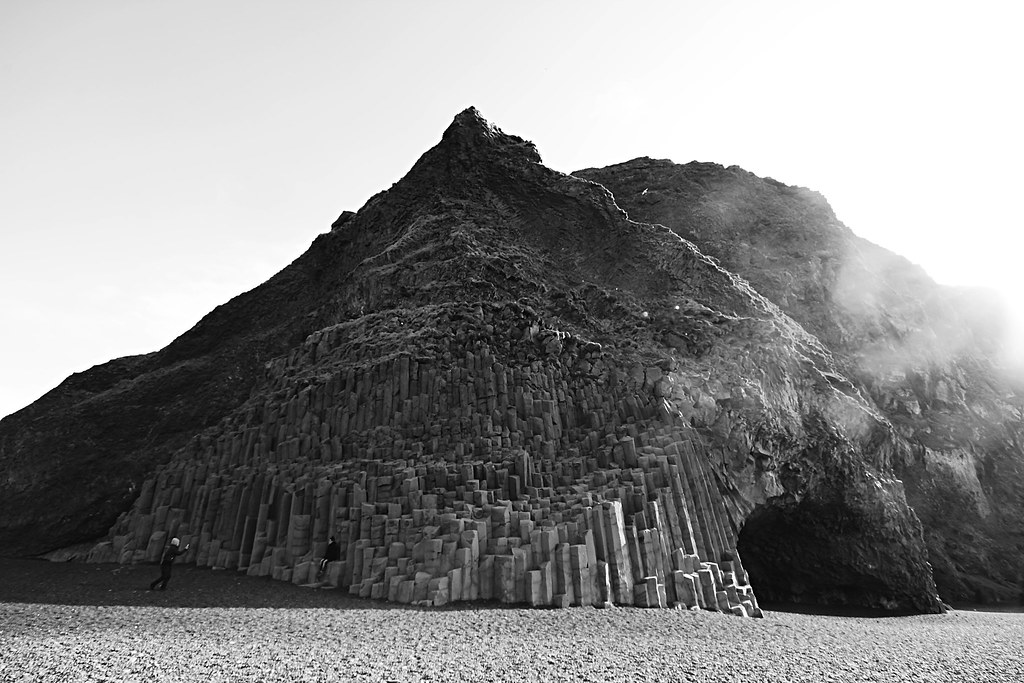

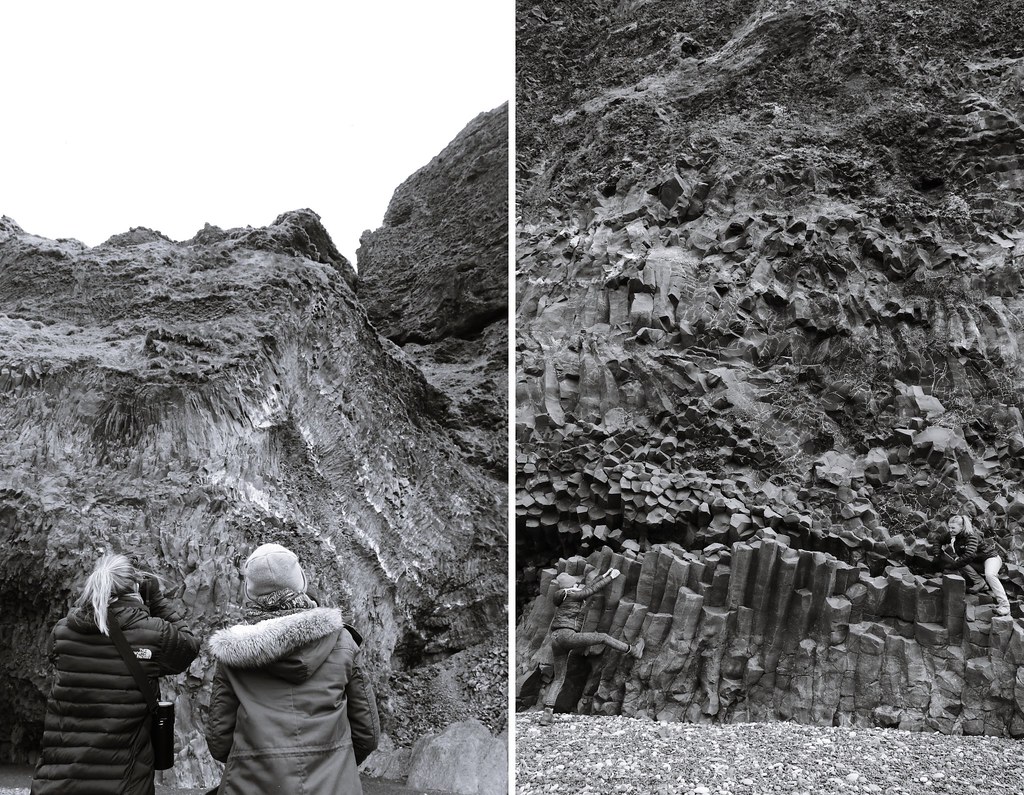

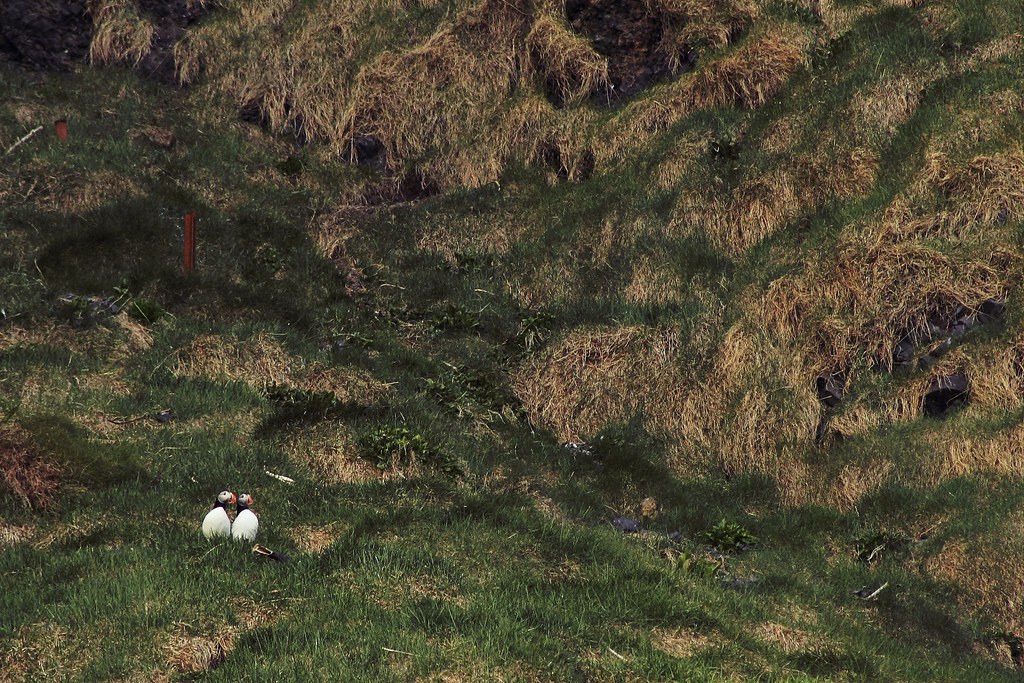







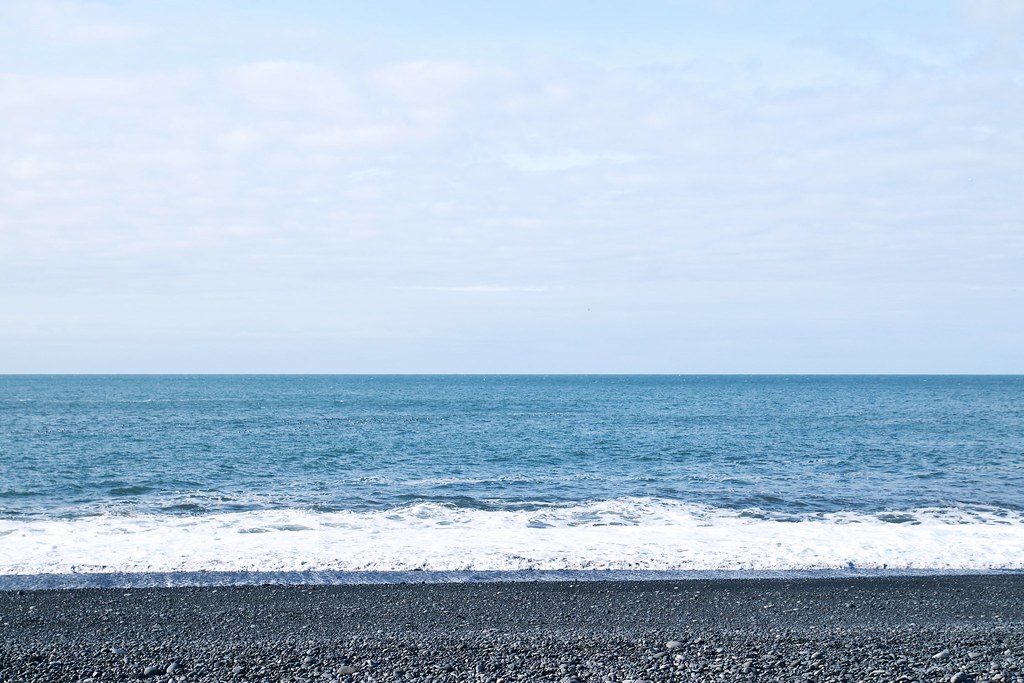
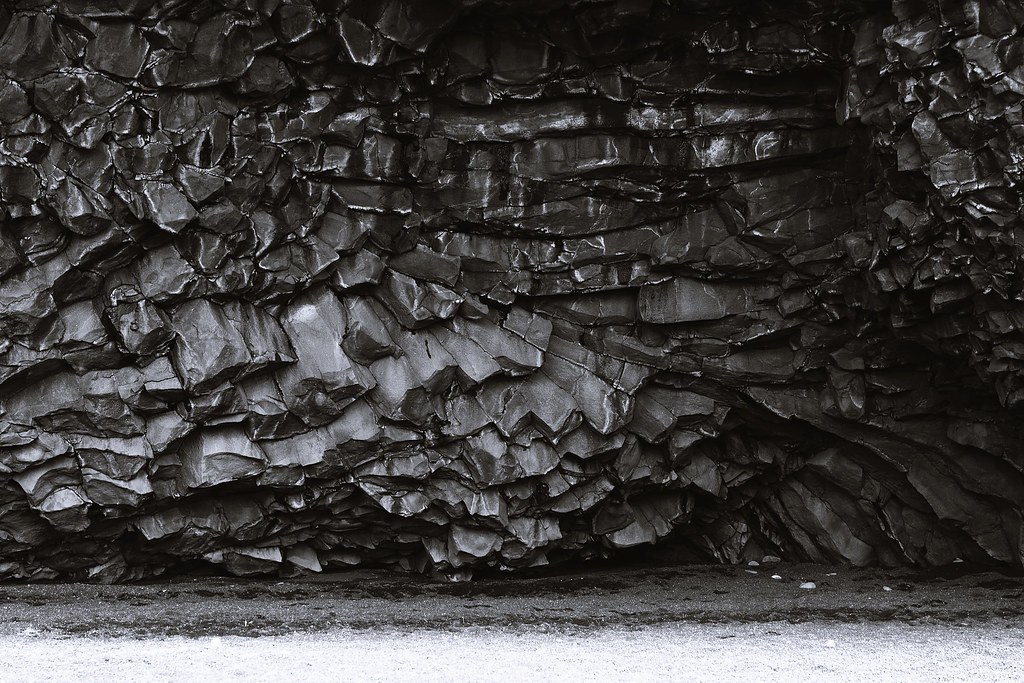
After seeing frosty diamonds at Jökulsárlón Glacier Lagoon we took the long drive back to Vík. We made stops at Svinafellsjökull and Svartifoss on the way and didn't arrive in Vík before late evening. Personally, I was tired but even more so I was in need of a good hot shower. Three days had past since the last so a shower only seemed well-deserved. We searched high and low for a place to stay in town but all accommodation were already fully booked. Word of advice: Vík is definitely a popular stop over for tourists exploring the southern coast of Iceland, so make sure to book in advance if passing through! Thankfully, we were not completely out of luck as Nordur-Vik Youth Hostel came to our rescue. They offered us a good deal with free use of the bathrooms and a full high standard breakfast buffet the next morning, which included waffles and homemade bread. Definitely an upgrade from our usual self-cooked oatmeal! We took our well-deserved hot shower and spent the remaining evening in the dining area to fully warm up our bodies before returning to another night in the tent.
Next morning we took off around 9AM, heading towards Reynisfjara. Puffins can be seen at Dyrhólaey and Reynisfjara - the beach on the western side of Reynisfjall in Vík - so we were hoping to start the day off with a glimps of these colourful beaked birds. However, as we arrived the puffins had already left for the sea and only a large colony could be spotted in the distance, floating in the waters in front of the black volcanic sand beach. I am not really a bird-fanatic but I still had to swallow a ball of disappoinment as I realised we were indeed too late. Luckily, Reynisfjara beach is not only popular for its rich birdlife. Here you also find Hálsanefshellir which is a remarkable sea cave made of columnar jointed basalt, better known as the "organ pipe". Hálsanefshellir is a remarkable architectural work and these rock formations were surely speaking to our inner-geologists. Basalt rocks are formed from the rapid cooling of basaltic lava and this phenomenon can be observed at several places in Iceland, e.g. Svartifoss and Kirkjugolf on the Southern coast. I could have stood there the entire day completely mesmerized by those formations!
In real life, we spent and hour or so on the black beach; we climbed the columns and watched the ocean waves crashing into the rocks, before we continued our journey towards Reykjavik.
Next morning we took off around 9AM, heading towards Reynisfjara. Puffins can be seen at Dyrhólaey and Reynisfjara - the beach on the western side of Reynisfjall in Vík - so we were hoping to start the day off with a glimps of these colourful beaked birds. However, as we arrived the puffins had already left for the sea and only a large colony could be spotted in the distance, floating in the waters in front of the black volcanic sand beach. I am not really a bird-fanatic but I still had to swallow a ball of disappoinment as I realised we were indeed too late. Luckily, Reynisfjara beach is not only popular for its rich birdlife. Here you also find Hálsanefshellir which is a remarkable sea cave made of columnar jointed basalt, better known as the "organ pipe". Hálsanefshellir is a remarkable architectural work and these rock formations were surely speaking to our inner-geologists. Basalt rocks are formed from the rapid cooling of basaltic lava and this phenomenon can be observed at several places in Iceland, e.g. Svartifoss and Kirkjugolf on the Southern coast. I could have stood there the entire day completely mesmerized by those formations!
In real life, we spent and hour or so on the black beach; we climbed the columns and watched the ocean waves crashing into the rocks, before we continued our journey towards Reykjavik.
